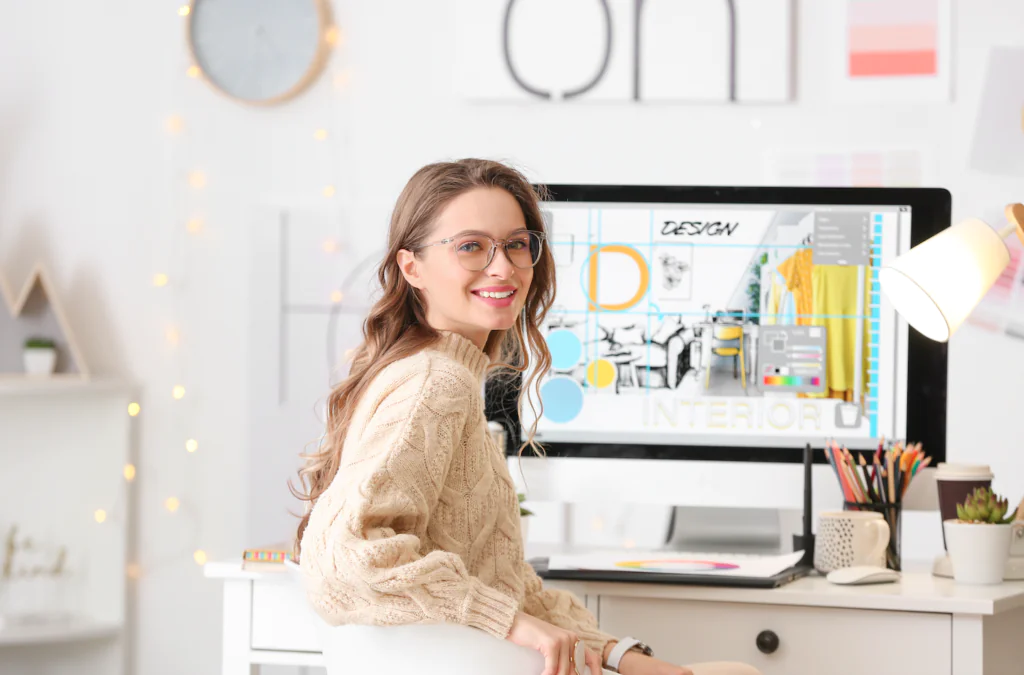Our guide to creating print-ready artwork
October 1, 2024

Planning printed media for your next project? To ensure the highest possible quality, there are a couple of things to keep in mind when creating print-ready artwork. Read on for our guide on specification and colour modes – plus some design principles that can help to shape your artwork.
Printing formats
First, decide what printing format you require for your project. From business cards and flyers to wall graphics and vehicle wraps, each one may have best practices or design principles to follow to make the most of your artwork. If you’re not sure about what materials you need, take a look at how ARC UK can help with our range of large and small format printing.
Print resolutions
To achieve a high-quality print design, there are a couple of things you have to keep in mind. To ensure you have a crisp, high-quality design, it’s important to make sure you use high-resolution images. Print materials tend to require a resolution of 300dpi (dots per inch) so sticking to this as a minimum should avoid any blurry or pixelated images in your design.
Colour modes for print
The other important factor in print design is colour modes. Print materials rely on the CMYK (cyan, magenta, yellow, black) colour mode, while digital designs use the RGB (red, green, blue) mode. Using the CMYK mode ensures that the colours you see on your screen will match the end result you see in print.
Planning your graphic design artwork
In order to achieve the most effective and visually pleasing print-ready artwork, it’s important to consider both the layout and composition of the design. Some of the most important points to think about when planning a print design are outlined below.
1. Use a grid
Imagine a grid lies on top of your design – this allows you to organise, clean up, and align all the components of your work. This can also make the rule of thirds easy to implement. Split your design into three columns and three rows, and use the points of alignment as guides to where your subject and supporting elements should go. This allows for balance to be maintained throughout the design.
2. Utilise your negative space
Negative space or white space refers to the space around the elements in the design. Optimising this area can prevent the design from looking cluttered. Don’t fill up every inch of your design space – work with the negative space to ensure your message is readable, your images look clean, and your overall design looks appealing.
3. Remember the layout principles
Think about the hierarchy of your design. Which aspect would you like to guide the audience towards first? Using size, typeface, colour, and contrast can allow you to highlight the most important information.
You should also think about how the components of your design interact with each other by considering the alignment of the design. Western cultures read from left to right, so it’s often easier to read larger chunks of text with this flow.
4. Use clear typography
Selecting the right typography and colours is one of the most important aspects of the design. Always think about legibility and accessibility when choosing colour combinations, while using different but complementary typefaces is a great way for sections to stand out.
5. Choose the best material
At ARC UK, we offer a wide range of printing formats. We can help bring your artwork to life, whether it’s for large wall prints, floor vinyl, high-quality business cards, or even flag printing. We always select the most suitable material for your project to provide you with an outstanding final result.
6. Decide on your finish
ARC UK uses FLXFinish+ technology to bring your graphics to life. This allows for a matte or gloss finish on your product to stand out amongst the competition. We can offer sustainable printing with less ink consumption, a cost-effective and efficient service and, of course, an eye-catching result.
Following these guidelines will help you to create print-ready artwork that stands out and gets your message across and promotes your brand in the best possible light, not matter the final format. If you’re looking for printed marketing collateral or wall graphics for your company, get in touch and request a quote for your project.
Latest stories
How Custom Window Stickers Enhance Your Storefront Appeal
Your shopfront is your first impression, and in a split second it can decide whether people walk past or walk in. On a crowded UK high street, a bold, distinctive look isn’t just nice to have – it’s essential for your brand to stand out. That’s where custom window stickers come in. Affordable, creative, and […]
Read Moreabout How Custom Window Stickers Enhance Your Storefront AppealWhy 3D Signage Is the Go-To Choice for UK Corporate Offices & Retail Stores
In today’s fast-paced business world, standing out from the crowd is more important than ever. Whether you run a corporate office in London or a retail store on a busy UK high street, the right signage can make all the difference. That’s where 3D signage comes in. Combining creativity, craftsmanship, and modern design, 3D lettering […]
Read Moreabout Why 3D Signage Is the Go-To Choice for UK Corporate Offices & Retail StoresHow Large Format Printing Transforms Corporate Branding for UK Businesses
In the competitive world of UK business, first impressions matter more than ever. Whether it’s a retail storefront, an office reception, or a construction site, how your brand represents your business visually makes a lasting impact. This is where large format printing plays a pivotal role. It is a creative, versatile and high-impactful way to […]
Read Moreabout How Large Format Printing Transforms Corporate Branding for UK Businesses